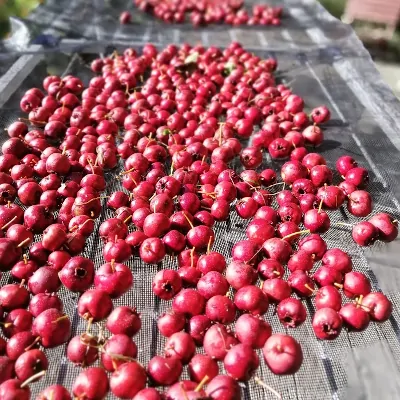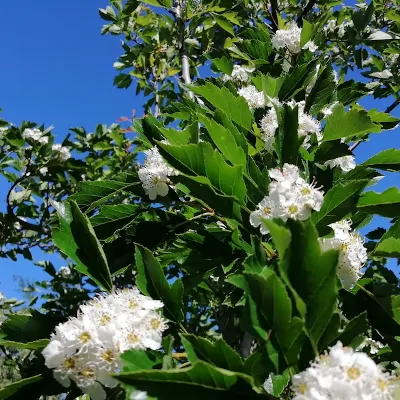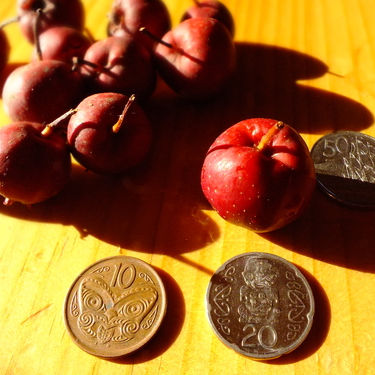Crataegus pinnatifida
Physical Characteristics:
Crataegus pinnatifida is a deciduous tree that reaches a height and width of about 7 meters (23 feet). It is hardy in USDA zones 5 to 9 and can withstand various soil types, including light (sandy), medium (loamy), and heavy (clay) soils. It can thrive in acidic, neutral, and alkaline soils and tolerates a range of pH levels. This tree can grow in semi-shade to full sun conditions and prefers moist to wet soil but can also tolerate drought. While it can withstand strong winds, it is not suitable for maritime exposure and can tolerate atmospheric pollution.
Habitats:
Crataegus pinnatifida can be found in woodland gardens and sunny edges.
Edible Uses:
The fruit of Crataegus pinnatifida is edible, either raw or cooked. It has a pleasant flavor, though it may have a slight bitterness when raw. The fruit can be used in various culinary applications such as pies, preserves, and drying for later use. The nutritional analysis per 100g of fruit includes 352 calories, 1.5g of protein, 3.8g of fat, 91.6g of carbohydrates, 6.9g of fiber, and 3.1g of ash. It also contains various minerals and vitamins.
Medicinal Uses:
The fruit of Crataegus pinnatifida has several medicinal properties, including being antibacterial, anticholesterolemic, cardiotonic, hypotensive, and stomachic. It contains flavonoids and organic acids and has been shown to lower blood cholesterol levels and improve blood circulation. In Korean traditional medicine, it is used to treat abdominal issues, induce menstruation, and alleviate pain and diarrhea. The dried fruit acts as an alterative, antiscorbutic, deobstruent, laxative, stimulant, and stomachic. Both the fruits and flowers of hawthorns are known as heart tonics, particularly effective for weak hearts combined with high blood pressure. The seed is recommended for difficult labor, hernia, and swollen genitals. Leaves and twigs are used to counteract varnish poisoning, and the root is used for nausea and vomiting.
Other Uses:
The wood of Crataegus pinnatifida is heavy, hard, tough, and close-grained, making it suitable for tool handles, mallets, and other small items.
Cultivation Details:
Crataegus pinnatifida is easy to grow and prefers well-drained, moist, loamy soil but can adapt to various soil types. It can tolerate both excessively moist and drought conditions. Full sun is best for fruit production, although it can also grow in semi-shade. It can withstand exposed positions and atmospheric pollution. Hybridization is common within the genus. Seedling trees typically take 5 to 8 years to bear fruit, while grafted trees may flower heavily in their third year. The flowers attract midges for pollination. Some forms of this tree are thorn-free, and it is considered very ornamental. Propagation is primarily through seeds, which should be sown in autumn in a cold frame. Stored seeds may take up to 18 months to germinate and can be stratified to improve germination rates. Fermenting the seeds in their own pulp or harvesting them "green" can also speed up germination. Potting up seedlings is advisable for small quantities, while larger quantities can be sown directly outdoors with protection from seed-eating creatures.


